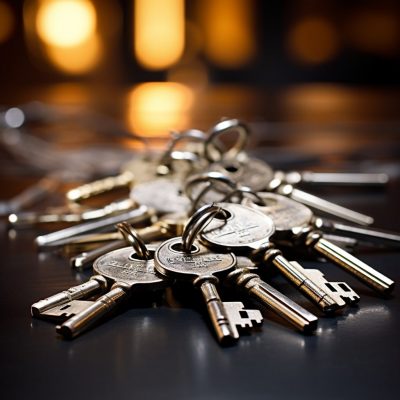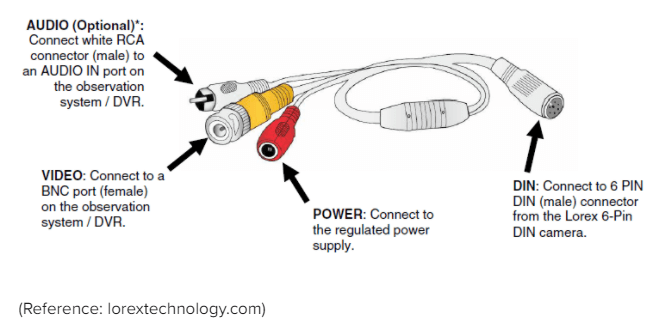Table of Contents
In the retail world, security is paramount. Security cables for retail range from enabling CCTV security to tethering inventory for hands-on customer experience. This article explores nine key types of security cables, each designed to bolster retail safety and address unique challenges. Dive in to understand the tools that fortify our shopping environments.
See how Solink can help your retail business.
As retailers prioritize safety and loss prevention, an array of security cables emerges to meet varying needs. These cables, while diverse in design and function, collectively ensure that retail spaces are both secure and shopper-friendly. Below, we outline the nine essential types of security cables for retail:
- Tether cables
- Locking cables
- Recoil cables
- Sensor cables
- Magnetic security cables
- Adhesive cables
- CVBS (Composite Video Baseband Signal)
- TVI (Transport Video Interface)
- PoE (Power over Ethernet)
Each type offers its unique advantages, addressing specific challenges in the retail environment. Let’s delve into their individual characteristics and applications.

Tether cables
Originating from the need to allow customers to interact with display items while deterring external theft, tether cables have become a staple in the retail sector. Historically, as stores sought ways to balance customer experience with security, tether cables emerged as a solution.
By allowing products, especially electronics, to be physically handled without the risk of them being taken, tether cables enhance in-store engagement. The inherent strength of the cable, coupled with the anchoring systems, makes unauthorized removal challenging. For retailers, this means increased sales opportunities as customers can test products and get a feel for them, knowing they are securely tethered.
Locking cables
With the rise of portable electronics like laptops and tablets, the need for specialized security grew. Locking cables, with a lock mechanism on one end, became the answer. They wrap securely around a table, stand, or immovable object, and the device in question is locked in place.
Throughout the years, these cables have thwarted countless shoplifting attempts, proving their worth in settings like trade shows, schools, and of course, retail environments. By physically securing devices, retailers can display high-ticket items without fear of easy theft.
Recoil cables
Recoil cables, often found in retail settings, owe their design inspiration to retractable mechanisms like tape measures. Their primary function is to return the attached item to its original position after being stretched out.
This not only keeps display areas tidy but also ensures products remain in their designated locations. Especially useful for handheld items, recoil cables add an additional layer of security by limiting how far an item can be moved from its point of attachment.
Sensor cables
As technology advanced, the integration of alarms with physical security became a focus. Enter sensor cables. These cables are often found securing high-value items. When tampered with or cut, they trigger alarms, drawing immediate attention to the situation.
Their evolution has been shaped by the increasing sophistication of thieves and the subsequent need for retailers to stay one step ahead.
Magnetic security cables
Building on the principle of magnetism, these cables present a unique security solution. The magnetic ends can only be detached with a specific device, typically held by store associates.
Attempting to remove them without this device triggers alarms, ensuring unauthorized removal is noticed. By leveraging magnetism, retailers add a layer of security that is both robust and user-friendly for authorized personnel.
Adhesive cables
Opting for flexibility, adhesive cables use strong adhesive pads to attach to products. This choice of attachment allows for a broader range of placement options compared to some other cables.
Over time, these have proven especially useful for items where traditional tethering might be cumbersome or aesthetically unpleasing.
CVBS, a mainstay in the world of analog video transmission, has deep roots in CCTV cloud video security. Older retailers might recall the early days of security when grainy black and white footage was the norm.
CVBS cables, typically using BNC connectors, facilitated this transmission. While technology has advanced, some retailers still employ these systems, appreciating their straightforwardness and reliability.
As a response to the demand for higher video clarity without overhauling existing infrastructure, TVI came into play. By allowing HD video transmission over traditional coaxial cables, TVI bridged the gap between older analog systems and modern needs.
For retailers, this meant clearer footage without the daunting task of replacing all their cabling, a cost-effective upgrade.
In the world of IP camera systems, PoE cables are revolutionary. By offering both data and power over a single Ethernet cable, installation became simpler. Retailers saw immediate benefits, notably fewer cables and greater camera placement flexibility. As security systems became more complex, PoE cables reduced clutter and streamlined operations.
Each of these cables, while serving distinct purposes, contributes to the broader goal of safeguarding retail assets. When integrated with advanced solutions like Solink’s cloud video security, retailers can achieve an unparalleled level of security and business insight.
Connect your cloud-based security cameras to Solink
As we’ve journeyed through the varied landscape of security cables for retail, one thing becomes clear: the importance of integrating these physical security measures with advanced security solutions. While cables play a pivotal role in safeguarding assets, cloud-based video security elevates this security to the next level.
Solink stands at the forefront of this evolution, offering retailers cloud video security, enhanced security, and invaluable business insights. By connecting your cloud-based security cameras to Solink, you not only fortify your retail space but also harness the power of data to drive business growth. Embrace the future of retail security with Solink and ensure your business is both protected and primed for success.
To see how Solink transforms your security camera system, sign up for a demo today.

